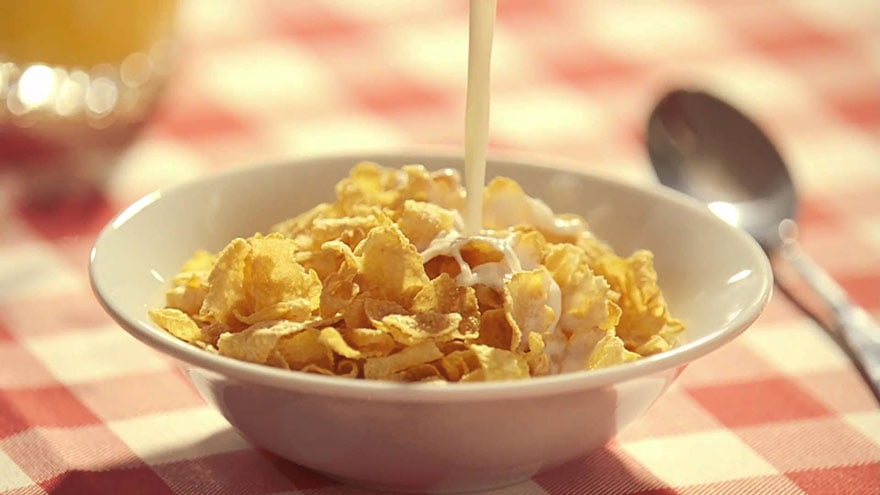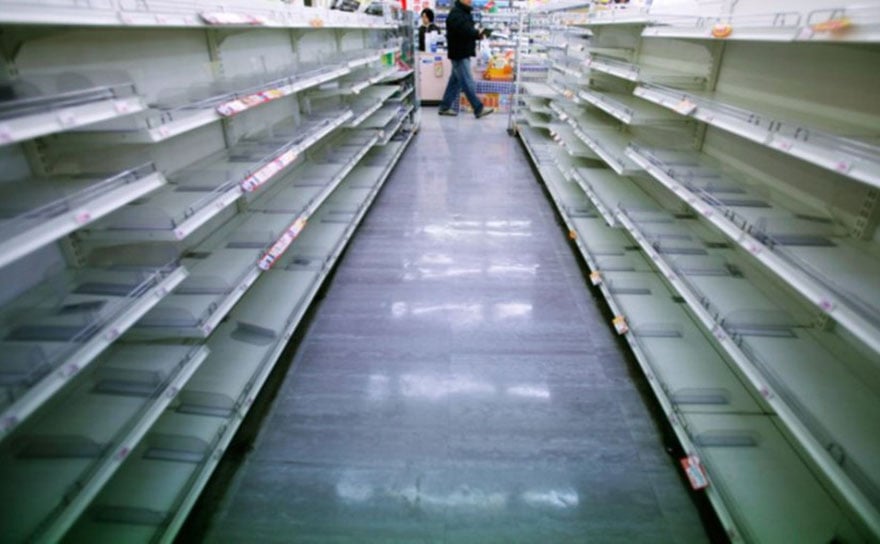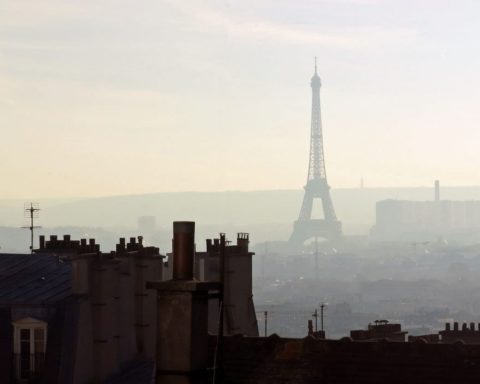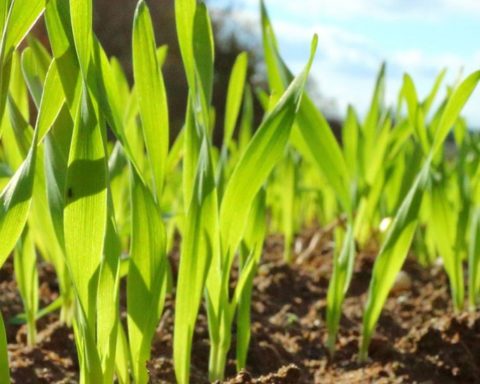Since Thursday 14 September, on the radio, on TV, in the newspapers, they've been talking about nothing else: the NGO Future generations would have found glyphosate residue in our corn flakes and about 30 everyday foods. This product, considered a carcinogen, is a widely used herbicide under Monsanto's Roundup brand. Farmers have been using it for years, but, faced with the increasing number of serious and unscientific studies and the public and media outcry, they know that the days of glyphosate are numbered. The problem is that they say they do not know how to replace it and that its elimination will bankrupt hundreds of farms and cost billions. So, here's the latest in a great buzz battle. With our health at stake.
CLet's start with the facts of the day. The anti-pesticide NGO Future generations publishes This Thursday, September 14, the results of a study that is going to cause a media shock: it analyzed thirty everyday consumer products; more than half of them contain traces of the world's most controversial herbicide, glyphosate, whose molecule is used in the composition of Monsanto's famous Roundup. A molecule classified two years ago as a probable carcinogen by the World Health Organization (WHO).
It was on the basis of the fact that glyphosate was very rarely sought in our food by the fraud authorities - because, according to the NGO, analyses are expensive - that the association had the idea of checking it for itself. Members of Générations futures went shopping in two supermarkets, in Paris and Picardy. They bought packets of lentils, split peas, pasta, rusks and breakfast cereals. There is no doubt that some of the products in their shopping trolley are in your kitchen cupboards.
The published results are shivering: out of 30 samples analyzed, 16 contained glyphosate. The NGO found it mainly in cereals (Muesli Alpen Swiss, Weetabix Original, Muesli Jordan Country crisp, Country store Kellogs, Grilled Oatmeal Granola with Jordans Apples, All Bran Fruit 'n Fibre Kellogs) but also in lentils (Green Lentils Vivien Straw and Blond Lentils Leader Price) and chickpeas (Chickpeas St Eloi and Chickpeas Leader Price).
Immediately, the media gets excited and makes headlines with this information. The Obs even titled: " Glyphosate: a carcinogen that you swallow at breakfast. ". Marianne is more direct: " From Roundup to breakfast ".
UP' Magazine is not an advocate of glyphosate, far from it, but such effervescence is intriguing. Especially since the number of products tested (30) is small enough to claim to represent a sufficient panel for a scientific study. Logically, several dozen products would have to be tested at different times. Examination of the dossier published by Générations futures increases the perplexity.
A succinct but impactful study
Visit document published by the NGO is quite succinct: 8 pages. The actual results are two pages long. It states that 53.3 % of the 30 samples tested contained glyphosate. In what quantity? « The concentrations found range from 40 µg/kg for a breakfast cereal to 2,100 µg/kg for a sample of dried lentils. "says the study. Don't these numbers mean anything to you? The NGO states that there are no "MRL" exceedances in the samples analyzed. The MRL for Maximum Residue Limit for Pesticide Residues is a regulatory threshold established for a food/pesticide pair. This means that some foods have a low threshold while others (e.g. wheat) have a high threshold. These thresholds were harmonized by the European Union in September 2008.
So, finally, glyphosate was found, but in sub-standard amounts. In a box, the NGO states: "In a box, the NGO states: " In France, it is the Directorate General for Fraud Control (DGCCRF) that has to make the analyses and transmit them to the EU every year. The data are published two years after the analyses have been carried out. Thus in 2017, we received the data from the analyses for 2015. The 2017 data (for 2015) indicated that quantifiable pesticides were detected in 69.9 % of fruit samples and 36.6 % of vegetables.. "The study published today is not a scoop, since an official study already showed the presence of the pesticide in food. As for the MRL exceedances, this official study estimated that 1.4 % of the samples exceeded the MRL.
To summarize: Pesticide is found in just about every food, but at doses that are almost always below the risk threshold.
When questioned by Le Monde, François Veillerette, spokesperson and director of Générations futures, made an important clarification: "... the French government has not been able to provide the necessary resources to ensure that the future generations of the world's children will be able to live in dignity. Obviously, there's no risk of acute poisoning... ». Phew, we are reassured. But he immediately adds: " But we know that being exposed to one carcinogen alongside others, in other parts of the environment, for years and years, is not at all good news for human health. ». Yes, it is.
Thus the thing is admitted: this study does not present any scientific guarantee, but it has the merit of alerting the population to the presence of pesticides in food. We already knew this, but a booster shot does no harm. The NGO is very honest in this respect, since its document stipulates a "warning": "The study is not scientifically guaranteed, but it has the merit of alerting the population to the presence of pesticides in food. This survey is based on the analysis of cereal- or legume-based foods likely to be ingested by an individual at some point in his or her life. The foods were selected from among the brands available in stores on the date of the survey and in the sampling area. It does not claim to be perfectly representative of the consumption of this type of food in France and does not claim to accurately reflect the average state of glyphosate contamination of this type of food sold in France. This survey aims to shed light on the questions raised by the public and our organisation about the presence of glyphosate residues in non-organic foodstuffs.. "A warning that presumably most of the press has not read. Catchy headlines that would have worried the public at breakfast time were sufficient in terms of the information itself.
This media hurricane comes at a strategic time...
Last July, the European Commission proposed the renewal of the glyphosate licence for ten years. The vote on the authorisation of this controversial herbicide could take place on 5 or 6 October in an expert committee. France announced at the end of August that it would vote against the Commission's proposal. Our country has a key position, as a qualified majority (55 % of the Member States, representing 65 % of the Union's population) is required to pass the decision.
Decision in a very confusing scientific context: the European Chemicals Agency (ECHA) and the European Food Safety Agency (EFSA) considered that there was no reason to classify glyphosate as a carcinogen. The opinions of these two agencies did not extinguish the scientific controversy over the danger of this product, which is classified as a "probable carcinogen" by the International Agency for Research on Cancer, the World Health Organization (WHO) agency responsible for inventorying the causes of cancer. This controversy, which has been widely reported by several NGOs, including Future Generations, accused European scientific authorities last August of biased assessments: "The European Commission has not yet taken a decision on this issue. Of the twelve available studies on the carcinogenicity of glyphosate, seven show an increased risk to rodents exposed to glyphosate, but these have not been taken into account by the European agencies. "said François Veillerette, director of the NGO, at a press conference. « It's a biased assessment ", he accused.
Shields are up in farmers' homes
Faced with this pressure, and Nicolas Hulot's desire to oppose the renewal of the glyphosate licence, it is now the farmers' turn to make their voices heard. We are used to the farmers' lobby and their excellent experience of media pressure. In the glyphosate affair, their argument for caving in to the minister of ecology is...ecological. It's subtle and sobering. « Anyone who practises conservation agriculture and who has stopped ploughing to capture carbon in the soil, according to the principles established at COP21, will have to stop conservation agriculture if they cannot use glyphosate as a spot treatment to clear fields just before planting, when frost has not removed the plant cover planted just after harvest. "Arnaud Rousseau, president of the Fédération des producteurs d'oléoprotéagineux, told AFP. He added in a tweet: " By condemning glyphosate, Nicolas Hulot is burying agro-ecology and the efforts made by farmers on the soil. ".
Farmers argue that it is not the active ingredient in glyphosate that is at issue but the "adjuvants" used by Monsanto to accompany glyphosate, ". including taloamine "...in Roundup. According to Arnaud Rousseau, the glyphosate itself has the following characteristics " to be a total weed killer, but only a contact weed killer, not a systemic weed killer, i.e. it affects weeds but not earthworms, soil microbes or insects. ".
Let's summarize again: glyphosate may make humans sick, but not earthworms and insects. So we're at peace.
Grim picture
Beyond these arguments, the real issue is that farmers do not know what to replace glyphosate with. « If glyphosate is eliminated tomorrow, it will have to be replaced by tillage, and machines will have to be used several times to destroy the regrowth and perennials. "says Jean-Paul Bordes, director of research and development at the Arvalis plant institute, which points to the consumption of additional fuel oil, materials and labour.
" Thistle, quackgrass, bindweed will make a comeback and generate additional weeding costs. ", he insists, who believes that the return to ploughing will " increase the risk of erosion, soil compaction" and result in the "loss of some form of fertility". ".
One of the darkest tables, in the middle of which appears a study, another, carried out by IPSOS and published by Le Figaro2 billion the consequences of glyphosate withdrawal for farmers.
" This would lead to a drop in yield and therefore a withdrawal of exports, particularly for cereals around EUR 1.06 billion, to which must be added EUR 900 million for vines. "says the polling firm. Also at the individual farm level, The non-registration would also have a direct impact on farmers, in terms of work organisation, profitability and cultivation practices". "according to Ipsos. According to this survey, 73% of farmers believe that the withdrawal would have an impact on the organisation of work on their farm and 72% believe that the economic profitability of their farm would be impacted.
" Without glyphosate, I don't know how to do it.regrets Hervé Pommereau, a cereal farmer in central France. For the beets I tried the hoe but it takes 15 times more time. ». It is true that the return to elbow grease in the 21st century is disconcerting.
Le Figaro adds that this withdrawal from the market would also represent an increase in production costs for the majority of glyphosate users, up to 22% in viticulture and 26% for field crops. It would also result in a loss of profitability of up to 33% for grain farms and 20% for wine farms.
There's no alternative?
Farmers point out that there are currently no equivalent alternative treatments. Here, too, there are questions to be asked. The problems with glyphosate are not new. We have been talking about it for years. Manufacturers should or could have found alternative solutions. It is difficult to admit that, in an era full of scientific discoveries, we have not been able to find an effective herbicide that is safe for human health. We are able to go to Mars, transform our genome, make cars without drivers, and we don't know how to get rid of weeds properly? Weird.
Have farmers been put to sleep by the seven exhaustive health assessments carried out by public authorities over the last forty years, giving glyphosate as a product without risk to human health?
For NGOs, these studies are biased and tainted by Monsanto's "interventions". In fact, the American justice system has obtained the declassification of more than 250 pages of Monsanto's internal correspondence. We learn that the agrochemical company, producer of Roundup, had been aware of the mutagenicity of glyphosate since 1999. The multinational then set out to cover up the affair by commissioning a study to convince regulators that glyphosate was harmless.
Would the farmers have been taken hostage by Monsanto, who got them hooked on their product? That's for sure.
While waiting for the light to be shed, if it is shed one day, we must not lose sight of the fact that we are talking about human health. The stakes are high enough not to generate ill-considered media buzz and pressure from professional lobbies. We need clear information that is neither alarmist nor rigged for ulterior commercial purposes, be they those of the media or industry.
To meditate on while enjoying your next bowl of corn flakes.













